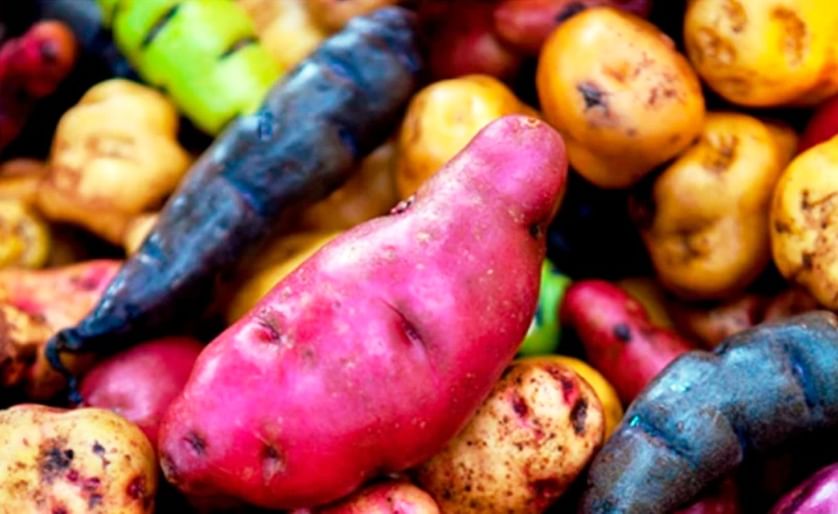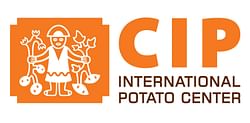Native potatoes, the new hope for Peruvian producers
Native potatoes, the new hope for Peruvian producers

In the Andes, at 3,600 meters above sea level, the more than 2,500 varieties of Peruvian native potatoes grow. There are yellow, purple, black and even red.
Each one, with a different nutritional property and processed in different presentations, has gained a place in international markets. Now the producers see in that tuber an opportunity to improve the current situation of the field.
Their efforts began long before the Agrarian Plenary of Congress - held on June 14 - approved the law to promote strategic actions for the competitive development of the potato producer.
Edilberto Soto, producer of Ayacucho and president of the National Coordinator of Potato Producers:
Other potential markets are Russia, Aruba and even Dubai, which do not restrict the entry of this product. 'But there is a problem, they should be sent processed,' Soto emphasizes.
Greater profits
Currently, a potato producer of varieties such as perricholi, canchay or white earns S / 0.80 per kilo in the field. But if they sell native, they can earn from S / 3.00. If they process it, like chips, precooked, frozen or others, the profits may be higher, says Miguel Quevedo, a specialist from the Ministry of Agriculture and Irrigation (Minagri).
These productions would also have a good reception in the domestic market, according to Óscar Ortiz, director of Research and Development of the International Potato Center (CIP):
An industrial processing plant is what the more than 200 thousand small farmers that are dedicated to the production of native potatoes of the country need today.
Israel Laura, chef who together with Soto will organize a meeting with state and private authorities this June 28:
Omar Cosío, founder of the vodka brand "14 Inkas":
Each one, with a different nutritional property and processed in different presentations, has gained a place in international markets. Now the producers see in that tuber an opportunity to improve the current situation of the field.
Their efforts began long before the Agrarian Plenary of Congress - held on June 14 - approved the law to promote strategic actions for the competitive development of the potato producer.
Edilberto Soto, producer of Ayacucho and president of the National Coordinator of Potato Producers:
“Peru inherited an ancestral product valued by many countries. "And, as indicated, countries such as Korea and Singapore have already sent requests for purchase intention of up to 5 thousand tons / year.
"We are working to promote the certificate of origin of at least 12 varieties of native potatoes before they go on the international market.”
Other potential markets are Russia, Aruba and even Dubai, which do not restrict the entry of this product. 'But there is a problem, they should be sent processed,' Soto emphasizes.
Greater profits
Currently, a potato producer of varieties such as perricholi, canchay or white earns S / 0.80 per kilo in the field. But if they sell native, they can earn from S / 3.00. If they process it, like chips, precooked, frozen or others, the profits may be higher, says Miguel Quevedo, a specialist from the Ministry of Agriculture and Irrigation (Minagri).
These productions would also have a good reception in the domestic market, according to Óscar Ortiz, director of Research and Development of the International Potato Center (CIP):
"Today 5% of potatoes they are processed for national consumption, most go to the pollerias."First steps
"There is an international revolution in health, in superfoods, and native potatoes can enter that category and access those markets."
An industrial processing plant is what the more than 200 thousand small farmers that are dedicated to the production of native potatoes of the country need today.
Israel Laura, chef who together with Soto will organize a meeting with state and private authorities this June 28:
"The investment would amount to S / 20 million and would have to be located in Lima as strategic zone to export to start an agenda to industrialize the Peruvian potato."Can industrialize? The experience of the vodka brand "14 Inkas", made with native potatoes, is an example. In 2018 they won a gold medal in the US for their product.
Omar Cosío, founder of the vodka brand "14 Inkas":
"The only way to industrialize is by giving an added value to the final product, accompanied by a good package. They can be potato chips, frozen or pureed.”Data
- Production: Of the 19 potato producing regions in Peru, 9 have potential to produce native varieties.
- Consumption: The per capita consumption of kilo / year in Peru is 84 kilos. They hope to reach the Bicentennial with 110 kilos.
来源
La Republica Pe




